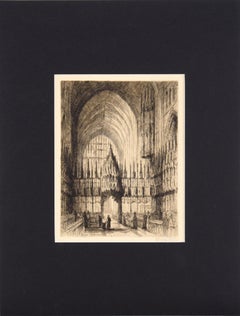J Alphege Brewer
Early 20th Century Romantic Interior Prints
Paper, Ink, Drypoint
People Also Browsed
21st Century and Contemporary Italian Desks and Writing Tables
Cherry
Vintage 1960s American Mid-Century Modern Armchairs
Wool, Upholstery, Walnut
Antique Mid-19th Century English Drawings
Paper
Antique Early 1800s Thai Other Architectural Elements
Teak
Early 20th Century Japanese Bohemian Cabinets
Fruitwood
Antique 19th Century Paintings
Paper
Antique 19th Century Indian Anglo-Indian Metalwork
Bronze
20th Century American Art Nouveau Screens and Room Dividers
Leather, Wood
21st Century and Contemporary Contemporary Figurative Paintings
Canvas, Oil
Early 20th Century Indian Anglo Raj Decorative Boxes
Wood
20th Century French Art Deco Prints
Paper
Vintage 1950s American Mid-Century Modern Desks and Writing Tables
Walnut
Antique Early 1900s Persian Malayer Persian Rugs
Wool
Mid-20th Century Impressionist Figurative Paintings
Oil
Vintage 1940s Table Lamps
Plaster
20th Century English School Figurative Prints
Etching
A Close Look at Romantic Art
In emphasizing emotion and imagination, romantic art shifted away from the restraint of classicism and neoclassicism that had dominated art in Europe since the Renaissance. Romanticism achieved its greatest popularity in art, literature, music and philosophy between 1780 and 1830, although its expression of individual experiences ranging from awe to passion informed culture in the decades after.
Landscape painting was especially popular during the romantic period, as were nature studies of wild animals and fantasies of exotic lands. Romanticism varied across Europe as it reacted to the rise of industrialization, a more personal relationship with faith that was distanced from the church and the rationalist thinking of the Enlightenment.
British painters such as John Constable and J.M.W. Turner responded dramatically to the light and atmosphere of the natural world, while William Blake conveyed humanity’s connection to the divine in his visionary art. In Germany, the late-18th-century Sturm und Drang, or Storm and Drive, movement, with its probing of the unconscious, inspired a sense of mystery in work by romantic artists such as Caspar David Friedrich and Philipp Otto Runge. In France, where the French Revolution had turned tradition upside down, Théodore Géricault and Eugène Delacroix used lush brushwork to paint monumental canvases with tumultuous scenes of nature and history.
The romantic movement and its subject matter were a significant influence on the Pre-Raphaelites, Symbolists and the American painters of the Hudson River School, as well as on other cultural movements in the 19th and 20th centuries that saw artists build on this perspective in which art was guided by emotion rather than reason.
Find a collection of romantic paintings, sculptures, prints and multiples and more art on 1stDibs.
Finding the Right Figurative-prints-works-on-paper for You
Bring energy and an array of welcome colors and textures into your space by decorating with figurative fine-art prints and works on paper.
Figurative art stands in contrast to abstract art, which is more expressive than representational. The oldest-known work of figurative art is a figurative painting — specifically, a rock painting of an animal made over 40,000 years ago in Borneo. This remnant of a remote past has long faded, but its depiction of a cattle-like creature in elegant ocher markings endures.
Since then, figurative art has evolved significantly as it continues to represent the world, including a breadth of works on paper, including printmaking. This includes woodcuts, which are a type of relief print with perennial popularity among collectors. The artist carves into a block and applies ink to the raised surface, which is then pressed onto paper. There are also planographic prints, which use metal plates, stones or other flat surfaces as their base. The artist will often draw on the surface with grease crayon and then apply ink to those markings. Lithographs are a common version of planographic prints.
Figurative art printmaking was especially popular during the height of the Pop art movement, and this kind of work can be seen in artist Andy Warhol’s extensive use of photographic silkscreen printing. Everyday objects, logos and scenes were given a unique twist, whether in the style of a comic strip or in the use of neon colors.
Explore an impressive collection of figurative art prints for sale on 1stDibs and read about how to arrange your wall art.
